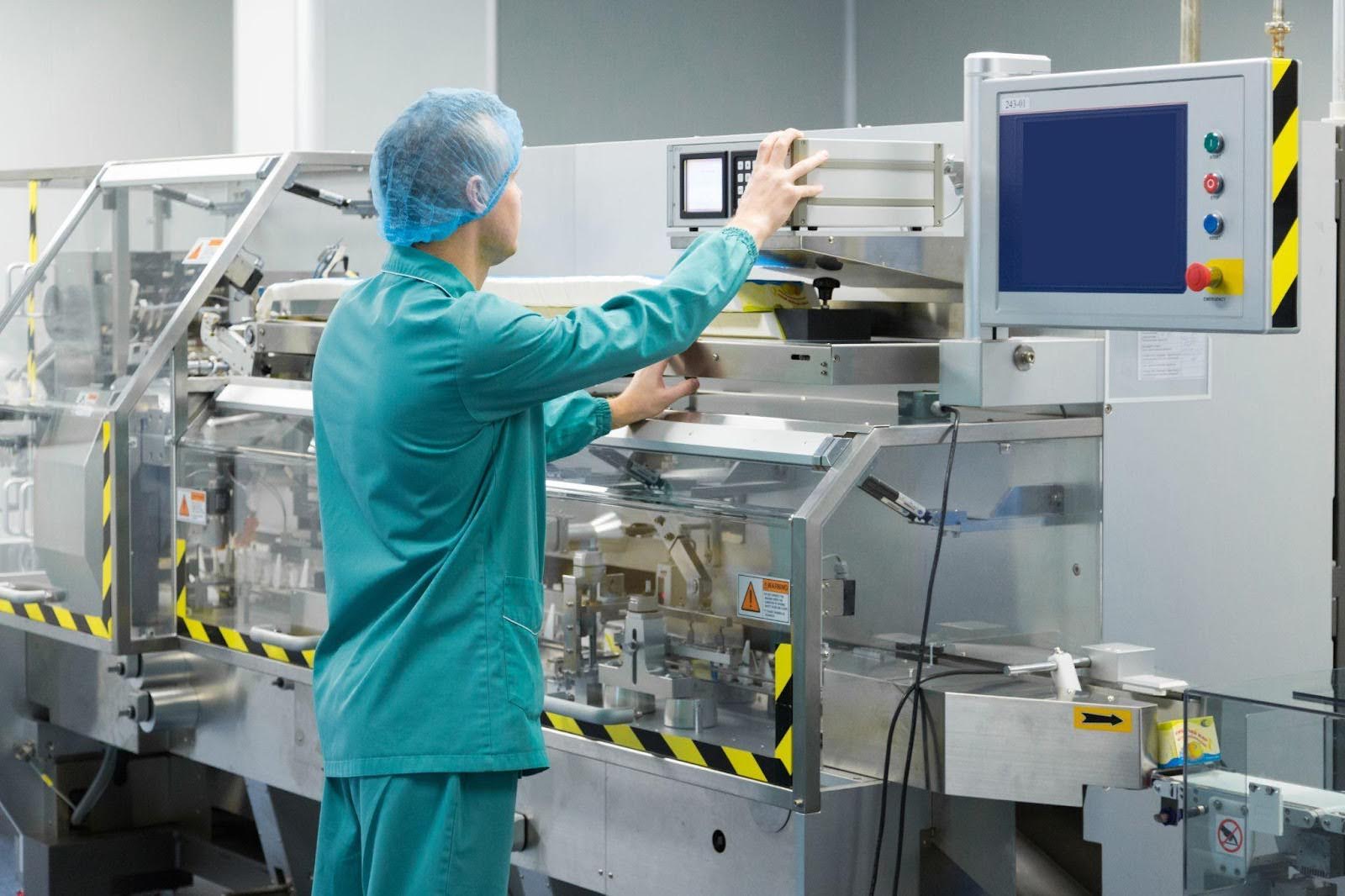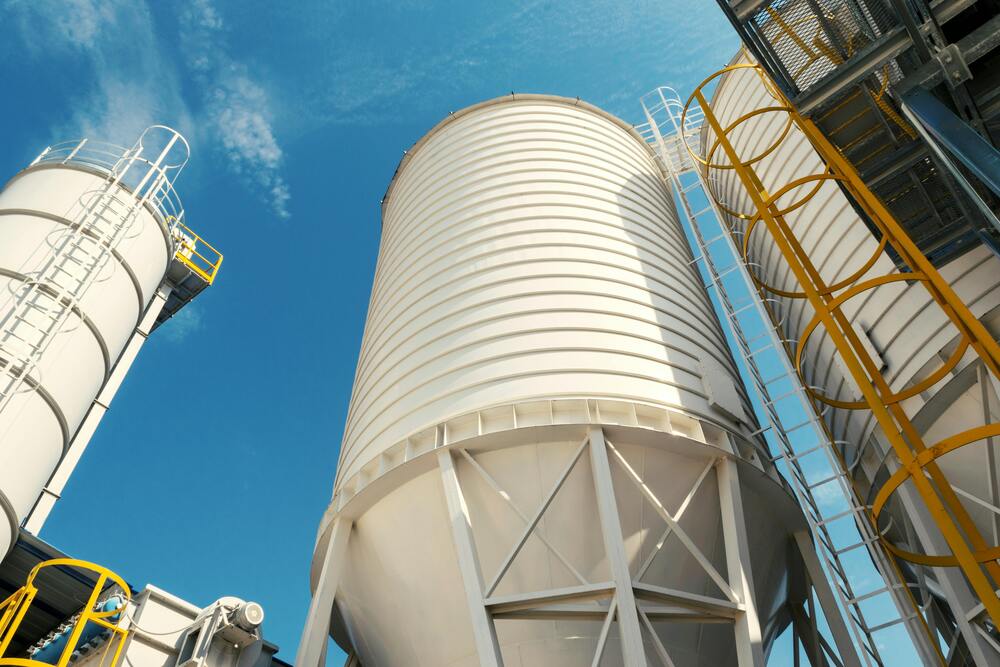Pneumatic conveying systems benefit many industries where efficient and safe material handling is paramount. These systems rely on moving materials through pipelines using compressed air or gas, offering a clean and effective way to transport bulk solids and powders.
However, one of the critical challenges in maintaining optimal performance is controlling the air velocity within the system. The correct air velocity ensures that materials are conveyed efficiently without causing blockages or excessive wear on the equipment. By understanding the role of air velocity in the system, you can effectively streamline the food and beverage manufacturing process and maintain peak operational efficiency.
Understanding Air Velocity in Pneumatic Conveyors
Air velocity in pneumatic conveying refers to the speed at which air moves through the conveying pipes, a critical factor in keeping material particles suspended as they travel through the system. Also known as conveying air speed or airflow velocity, this parameter is influenced by the changing pressure and temperature within the pipelines.
The required air velocity depends on various factors, including the characteristics of the material being conveyed and the design of the conveying line. The solid loading ratio, which is the ratio between the mass flow rate of the material and the air used for conveying, determines the minimum air velocity needed to ensure smooth transport through the line.
For example, softer materials require lower air speeds to avoid generating excessive frictional heat, which can lead to material degradation and the formation of streamers. These streamers can clog the pipeline and cause pressure drops, compromising the efficiency of the system. Conversely, heavier materials need higher air velocities to stay in suspension and avoid settling at the bottom of the pipeline, which could lead to blockages.
Balancing the air velocity is essential to maintaining the integrity of both the product and the conveying system, ensuring efficient and reliable material transport.
What Is the Difference Between Air Velocity and Air Flow Rate in Pneumatic Systems?
Air velocity in pneumatic conveying lines refers to the speed of the air, whereas air flow rate pertains to the volume or mass of air moving through the system. To maintain optimal conveying conditions within the pipes, it is crucial that air velocity and air flow rate are proportional to each other.
What Affects the Air Velocity in the Pneumatic System?
Achieving the correct air velocity in a pneumatic conveyor requires a thorough understanding of the various factors that influence its speed. By carefully considering these factors, you can ensure that the air velocity is correctly calibrated to maintain efficient and reliable material transport.
1. Shape
The shape of the particles being conveyed can significantly influence the required air velocity. This is primarily due to the effect of particle shape on drag, which refers to the forces acting on the object in fluid motion. Typically, materials with larger surface areas experience more drag from the surrounding air. This drag helps to keep them suspended in the airflow, allowing them to be conveyed smoothly, even at lower velocities.
On the other hand, materials with a more spherical shape have a smaller surface area relative to their mass. This reduces the drag they experience, making them more prone to settling or dropping out of the airflow. Therefore, a slightly higher air velocity is typically required to keep spherical particles suspended and moving through the system efficiently.
2. Particle Size
The size of the particles is another critical factor. Materials that have a wide particle size will require a slightly lower minimum conveying air velocity. On the other hand, larger and denser particles will need higher velocities. However, the relationship between particle size and air velocity is not always straightforward. For materials with a wide range of particle sizes, a slightly lower minimum conveying air velocity might be sufficient.
For example, granular sugar, with its relatively large and dense particles, will require a higher air velocity for pneumatic conveying compared to a fine powder like flour. This is because the larger sugar particles have more properties to stay inactive and require more force from the airflow to keep them moving.
3. Weight & Density
Material weight and density are among the most influential factors in determining the appropriate air velocity. Heavier and denser materials require higher velocities to stay suspended in the air stream.
However, these higher velocities cause the materials to collide with the walls of the pipeline with greater force, leading to increased friction and impact. Over time, this constant high-speed contact can wear down the inner surfaces of the pipes and other components, leading to erosion, damage, and a shorter lifespan for the system.
As such, managing the velocity to accommodate these materials while preventing blockages and equipment damage is a complex challenge that requires careful calculation and consideration.
Tips to Optimise Air Velocity for Efficiency
To ensure your pneumatic system operates at peak efficiency while maintaining the right balance of air velocity and other key factors, consider these tips:
1. Calculate the Air Velocity
Calculating the correct air velocity is essential for optimising the efficiency of your pneumatic conveying system. This calculation should be based on the type of material being conveyed, considering factors such as particle size, shape, and density. By accurately determining the required velocity, you can ensure that the material remains suspended without causing unnecessary wear on the system.
2. Avoid Excessive Air Velocity
While it might seem that increasing air velocity would improve material flow, an excessive amount could be counterproductive. Not only does it lead to higher energy consumption, but it also increases the wear on the system components. Implementing a safety margin that balances air velocity and energy efficiency can help prevent unnecessary operational costs and extend the lifespan of your equipment.
3. Prevent Material Segregation
Material segregation can be a significant issue in pneumatic conveying systems, particularly when dealing with mixed materials of varying sizes and densities. Lean-phase conveying, which uses lower air velocities, can help prevent segregation by keeping the material evenly distributed within the pipeline. This approach can also reduce the risk of blockages and ensure a more consistent flow.
4. Regular Maintenance and Monitoring
Regular maintenance and monitoring of your pneumatic conveying system are critical for ensuring that the air velocity remains within the optimal range. Periodic inspections can help identify potential issues before they lead to costly downtimes. By keeping your system well-maintained, you can ensure that it operates efficiently and safely.
5. Consider the Pipe Diameter
The diameter of the pipeline plays a crucial role in determining the air velocity. Larger diameters require a higher volume of air to maintain the same velocity as smaller pipes. Adjusting the pipe diameter to match the required air velocity can help stabilise the airflow and prevent issues such as material buildup or excessive wear on the system.
Work with Pneu Powders Systems for Optimal Pneumatic Conveyors
Optimising air velocity in pneumatic conveying systems is a critical factor in ensuring efficient and reliable material handling. By understanding the key factors that influence air velocity and implementing best practices, you can improve the performance and longevity of your pneumatic system.
At Pneu Powders Systems, we specialise in delivering customised pneumatic conveying equipment tailored to the unique needs of food and beverage manufacturing businesses and beyond. Whether it’s selecting the right air flow regulators or choosing the ideal pipes for your application, we provide the expertise you need. Our solutions ensure that your pneumatic system operates at maximum efficiency, offering reliable and cost-effective material handling.
For more information about pneumatic conveying equipment, check out our guide on how to troubleshoot pneumatic systems and how to determine if pneumatic conveying is right for your industry.





